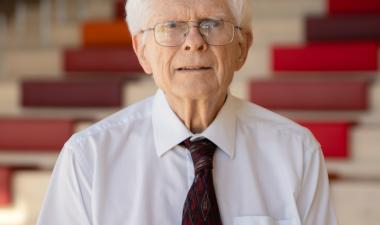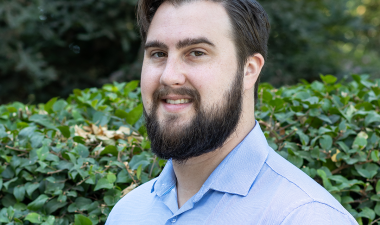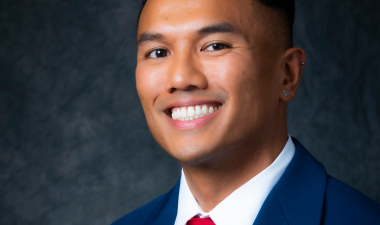Instead of learning to bake sourdough bread or assembling jigsaw puzzles during the past year, Julia Sankey made her dream came true.
The Stanislaus State professor of paleobiology and geology used the enforced time away from campus to realize her long-held desire for a community garden and led the effort to create the Turlock Community Gardens.
That’s gardens, plural, because Sankey and her team hope for more gardens in Turlock. Their inaugural effort is on just more than half an acre of land behind Cornerstone Covenant Church and Jessica’s House at Crowell and Christopherson roads, enough for 45 garden plots.
Many are being worked by Stan State faculty, alumni, a few students and in the future, when pandemic restrictions pass, more student groups.
Stan State graduate and current MBA student Melissa Been (’18, business) is tending the garden plot designated for Jessica’s House with her 7- and 5-year-old boys and volunteering in other ways.
“It seemed like such a wonderful thing the community would adopt and be able to benefit from so much,” said the native of Denair. “I wanted to help to make that possible.”
Been joined the Turlock Community Gardens board of directors, is overseeing the group’s website, helping with outreach and recently created promotional videos.
“I would not be as effective as a team member without my experience in the Stan State MBA program,” Been said. “Given the training I’ve had, I can help an organization with their structure, and with communication, project timelines, different things I have learned.”
Been’s community garden experience isn’t unlike Sankey’s.
“I had a plot when I was in graduate school at Louisiana State University, where I got my Ph.D., and it was a lot of fun,” Sankey said. “It was a great release from writing my dissertation. Right now, it’s about community.”
That’s what drew Stan State History Professor Marjorie Sanchez-Walker.
“I live alone with a dog and two cats,” Sanchez-Walker said. “This is a nice opportunity to meet people outside of campus and to do something in the sun. I have my own yard, but I don’t know what I’m doing. I just stick things in the ground.”
There’s help for that from folks such as Stan State alumnus Hector Vera (’17, biology), who doesn’t have a plot.
“I’m interested in gardening and meeting other people who want to garden,” said Vera, who wants to start a community garden in his hometown of Waterford. “I went through the Master Gardener program in 2020. I have a quarter acre garden at my place, and I was interested in meeting other people who enjoy gardening and seeing if I can learn from them or teach them.”
Costanza Zavalloni teaches sustainable agriculture at Stan State and is lending her expertise to novice gardeners, too, as she works on her garden.
She looks forward to her students working in the new garden in addition to returning to the on-campus sustainable garden, instead of gardening at home, which she’s guided them through remotely during the pandemic.
“Part of teaching in my class is developing community relationships between agriculture and the general public,” Zavalloni said. “People don’t know how their food is produced. There’s a disconnect. The only way to address it is to involve students in projects like this, a community garden, that lets them talk to people.”
Stan State Assistant Professor of Geography Alison McNally wants to grow a variety of squash on her coveted garden plot, but her participation goes beyond what she can put on her table.
“I did it to support Julia, but I also did it because I thought it was a great chance for me to contribute to a community project that goes beyond me and my interests,” McNally said. “I am so excited this is happening in our community and I’m surprised in this agricultural region we didn’t have a community garden before.”
That the 45 available plots went quickly, and the waiting list was cut off at 50 demonstrates the desire for a community garden. Sankey was just the one who got the earth turning.
Attending a virtual meeting of the Turlock Community Callaborative connected her to Jonathan Partridge, the volunteer and donations coordinator for the International Rescue Committee’s Turlock office.
“This was something we’ve been trying to get going for some time,” Partridge said.
His organization helps refugees around the world and assists them with settlement and assimilation as they work toward self-sufficiency.
Partridge had previously connected with Cornerstone Covenant Church Pastors Greg and Amanda Oppenhuizen, who’d wanted to work with IRC on a garden. The church leased a vacant portion of its property for the garden for three years at $1 per year.
“It was a perfect spot, down the street from the University, across the street from Julia’s house and a good location for our clients,” Partridge said.
It’s also near the apartment complexes where many students live.
Partridge contacted Anna Hazen, who has worked on farms. She designed the Turlock Community Gardens and with Been’s help, installed the irrigation system.
Sankey and others visited community gardens in the region, and she read a book on how to start a nonprofit organization. She just received notification the organization’s 501(c)(3) request was approved, meaning all donations to the Turlock Community Gardens are tax deductible.
Personal connections helped the garden take shape. Someone knew a walnut grower and shells were delivered to cover the pathways. Another had access to alpaca manure and Turlock Scavenger delivered 60 tons of compost from Modesto Compost, all free of charge. Volunteers then wheeled it onto the plots.
“It’s a miracle, in a way,” Partridge said. “That it came together so quickly, with all the pieces and all the people, it feels like it was meant to happen.”
The reality of the garden hit Sankey in late January.
That was when Jacob Weigel, assistant professor of art at Stan State, installed the Turlock Community Gardens sign that he and his students created from a design by local artist Abby Miller.
“I was there to help him lift it into the holes in the ground and I thought, ‘My God, it’s real,’” Sankey said.



